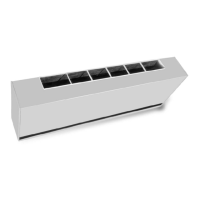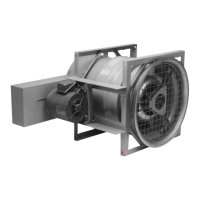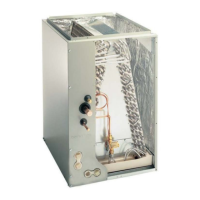
Do you have a question about the Trane HUV and is the answer not in the manual?
Describes unit mounting options: horizontal (ceiling) and vertical (floor).
Details unit construction from 14/16-gauge zinc coated steel with appliance grade finish.
Explains accessible end pockets for field installation of piping and controls.
Covers the positively sloped, insulated drain pan for proper drainage and IAQ.
Describes the acoustically designed, rigid fanboard assembly including fans and motor.
Details the chamber for housing the room air sensor for accurate temperature response.
Explains the dual blade mixing dampers for return and outdoor air modulation.
Describes the face and bypass option for airflow control and cost savings.
Explains the blow-thru design benefits for debris elimination and coil freezing avoidance.
Details main hydronic coil specifications, including wavy plate fins and hydrostatic testing.
Covers auxiliary hydronic coil specifications and connections.
Describes steam main coil design, face and bypass options, and connections.
Explains electric coil components, safety features, and connection points.
Details DX cooling coil specifications, including factory mounted TXV and controls.
Illustrates different factory installed piping package configurations (A, B, C, D).
Describes the DDC end device package and its available options.
Details the ZN520 controller for HVAC and building management.
Explains the TUC controller for classroom unit ventilators and ICS systems.
Covers pneumatic control packages for existing or new systems.
Explains standard ASHRAE control cycles (I and II) for ventilation.
Describes standard vertical unit installation in school perimeter rooms.
Details the 1-inch falseback unit for matching existing shelving depths.
Explains the 6-inch falseback unit for increased fresh air opening size.
Describes the dynamic air barrier unit applied in cold climates for draft interception.
Covers the ERS unit designed to work with classroom unit ventilators for energy recovery.
Describes horizontal unit installation as fully recessed with duct collars.
Details the typical fully exposed unit application with front discharge.
Discusses considerations for selecting ducted discharge locations for horizontal units.
Explains how to determine unit size based on air circulation and cooling/heating capacity.
Lists physical dimensions (length, height, width, depth) and shipping weights for units.
Provides the fluid volume in gallons for various coil types and sizes.
Illustrates various inlet configurations for horizontal unit ventilators.
Illustrates various inlet configurations for vertical unit ventilators.











